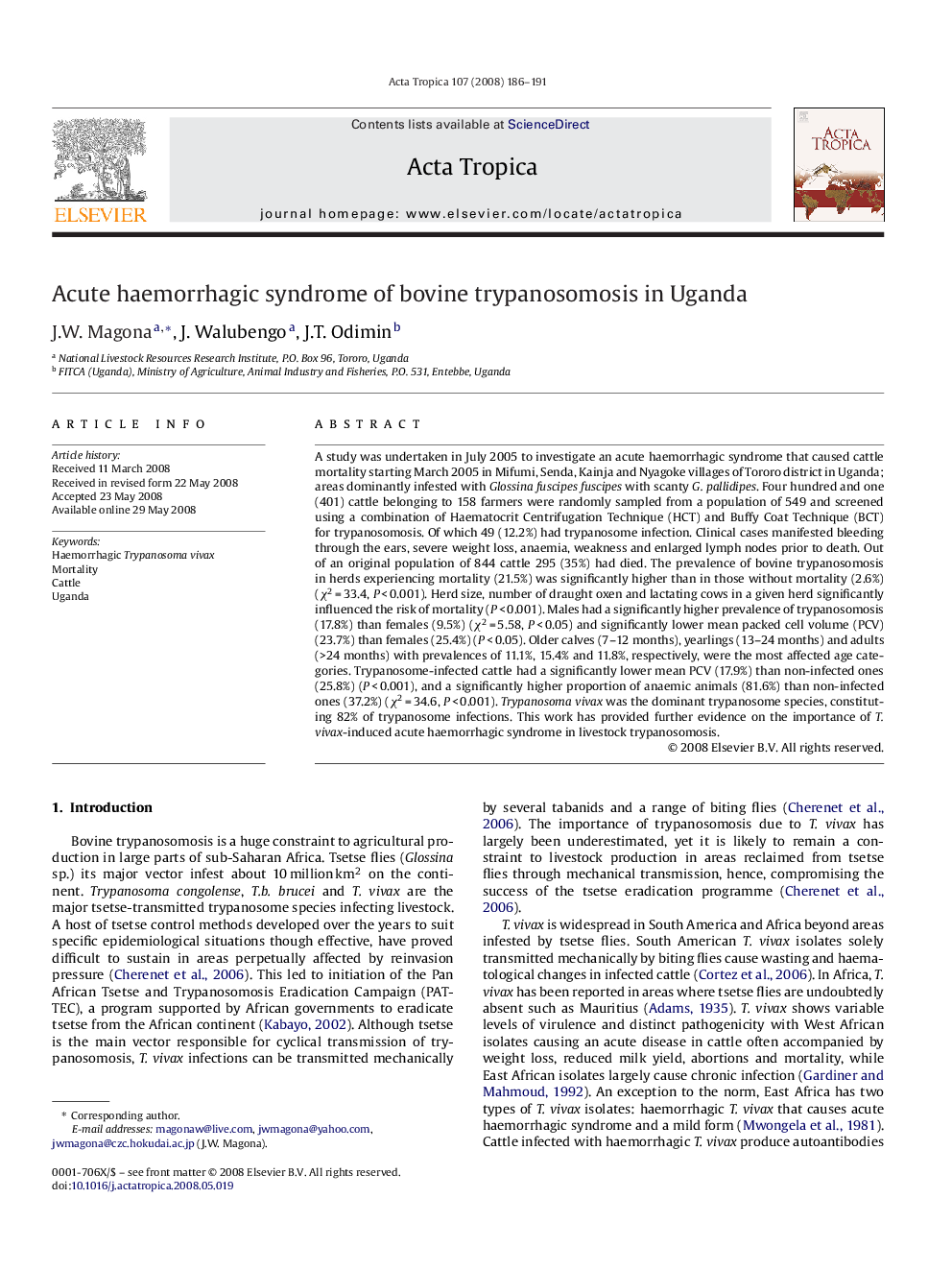| Article ID | Journal | Published Year | Pages | File Type |
|---|---|---|---|---|
| 3394380 | Acta Tropica | 2008 | 6 Pages |
A study was undertaken in July 2005 to investigate an acute haemorrhagic syndrome that caused cattle mortality starting March 2005 in Mifumi, Senda, Kainja and Nyagoke villages of Tororo district in Uganda; areas dominantly infested with Glossina fuscipes fuscipes with scanty G. pallidipes. Four hundred and one (401) cattle belonging to 158 farmers were randomly sampled from a population of 549 and screened using a combination of Haematocrit Centrifugation Technique (HCT) and Buffy Coat Technique (BCT) for trypanosomosis. Of which 49 (12.2%) had trypanosome infection. Clinical cases manifested bleeding through the ears, severe weight loss, anaemia, weakness and enlarged lymph nodes prior to death. Out of an original population of 844 cattle 295 (35%) had died. The prevalence of bovine trypanosomosis in herds experiencing mortality (21.5%) was significantly higher than in those without mortality (2.6%) (χ2 = 33.4, P < 0.001). Herd size, number of draught oxen and lactating cows in a given herd significantly influenced the risk of mortality (P < 0.001). Males had a significantly higher prevalence of trypanosomosis (17.8%) than females (9.5%) (χ2 = 5.58, P < 0.05) and significantly lower mean packed cell volume (PCV) (23.7%) than females (25.4%) (P < 0.05). Older calves (7–12 months), yearlings (13–24 months) and adults (>24 months) with prevalences of 11.1%, 15.4% and 11.8%, respectively, were the most affected age categories. Trypanosome-infected cattle had a significantly lower mean PCV (17.9%) than non-infected ones (25.8%) (P < 0.001), and a significantly higher proportion of anaemic animals (81.6%) than non-infected ones (37.2%) (χ2 = 34.6, P < 0.001). Trypanosoma vivax was the dominant trypanosome species, constituting 82% of trypanosome infections. This work has provided further evidence on the importance of T. vivax-induced acute haemorrhagic syndrome in livestock trypanosomosis.
